Stacy Kranitz: The Spectacle of Violence (GRAPHIC)
This is the first in a series of posts by Stacy Kranitz for BagNews Originals. You can see the rest of the series here.
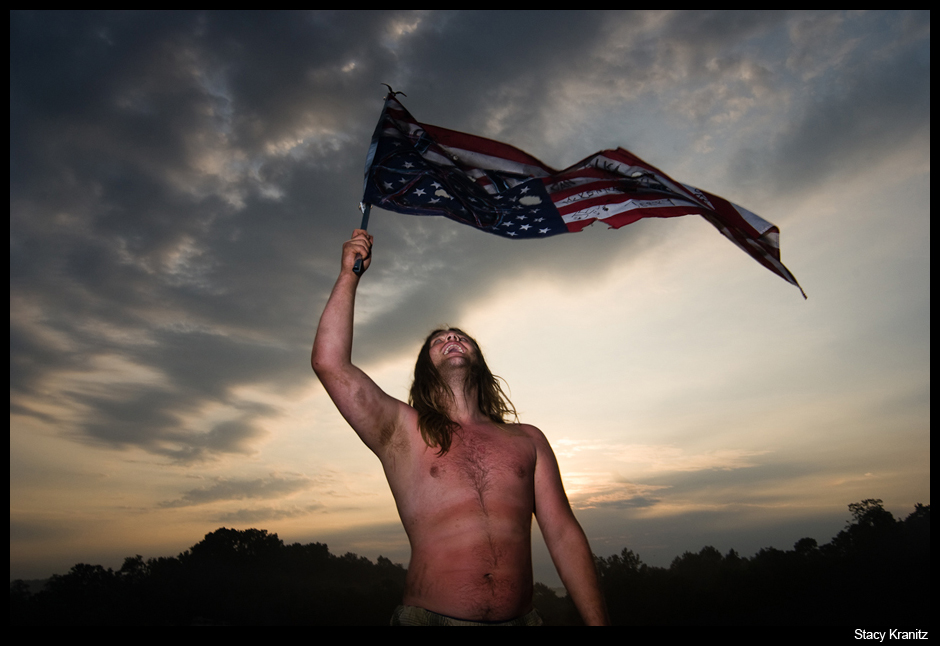
“A zombie-like state of being induced by all night drug use.” 2008
At dawn, I meet up with kids that have been up all night partying, when the beautiful dawn light combines with a zombie-like state of being, induced by all night drug use. It was in this moment two weeks ago that I met Scott. After spending some time with him, I moved away to photograph others. Soon after, a firecracker went off and someone started screaming. Initially, I did not think much of it because Skatopia is constantly buzzing with the sound of explosions and people yelling, yet after a few moments I noticed that it was coming from Scott, standing 30 feet away in a field. From that distance, it was impossible to tell if it was for pleasure or from terror.
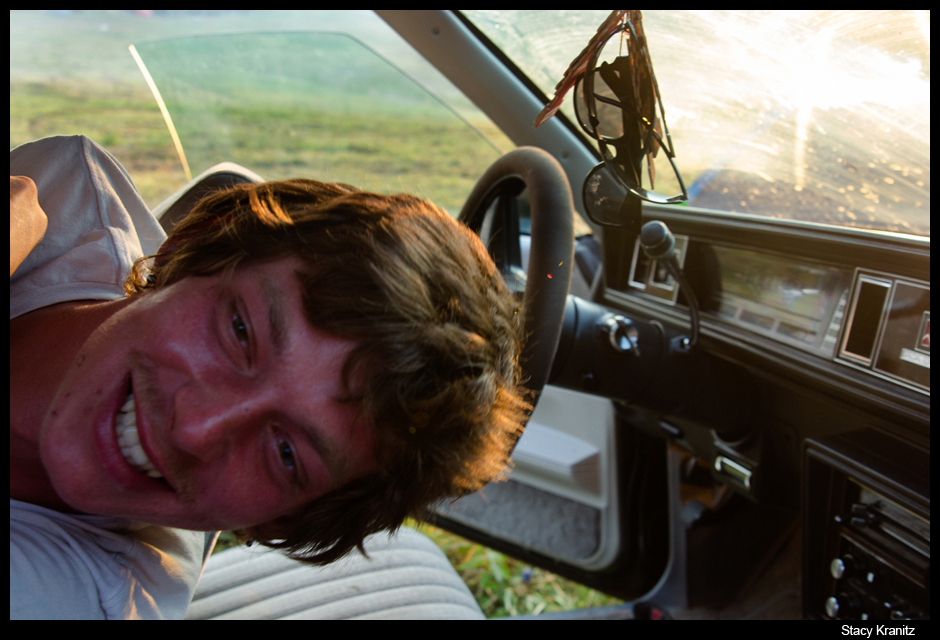
Scott before the explosion. 2013
As I got closer, it became apparent that Scott had blown off part of his hand from holding a lit mortar. He was covered in blood and in a state of shock as his friends and I gathered around. I called 911 and asked the dispatcher to send an ambulance. Then I began taking pictures. I just happened to do something useful before picking up my camera to photograph his decimated hand. There was a young woman in nursing school that kept us calm and told Scott what to do until the ambulance arrived. By 7:30 a.m. he was on his way to the hospital, in stable condition but missing two fingers; the light had lost its beauty. I went to bed.
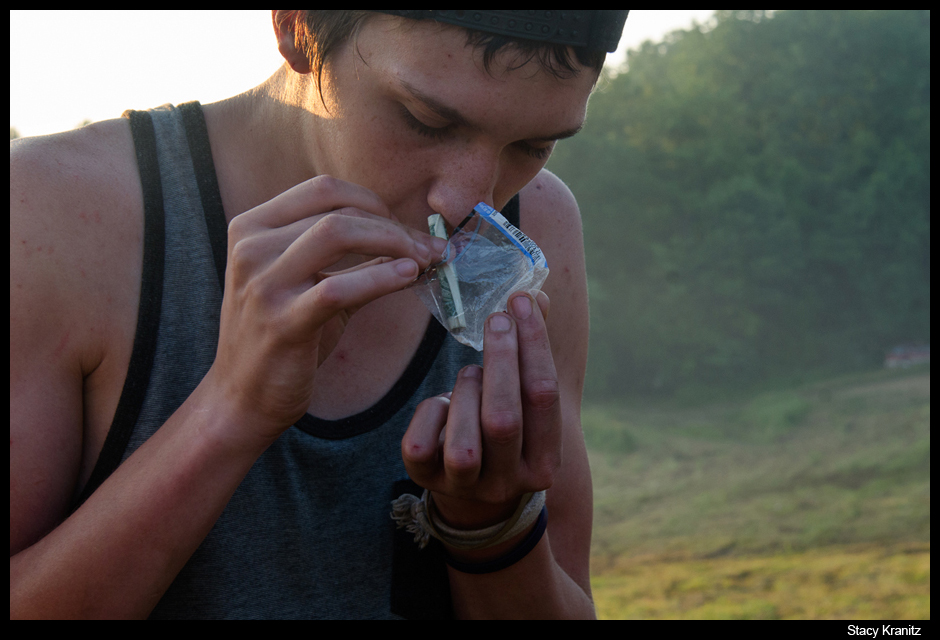
A young man snorts Molly (MDMA) just before Scott blows up his hand. 2013
For the past five summers, I’ve attended a weekend-long party on a rural piece of property in Rutland, Ohio. The place itself is hard to define; it has been compared to a commune, or a dystopian compound, yet neither of these descriptions accurately portrays the site and its inhabitants. It’s a community that has been the subject of several photographic essays, a feature length documentary, an article in Rolling Stone and an episode of MTV’s True Life, all of which focus on various aspects of the inner workings of its sense of community and brotherhood.
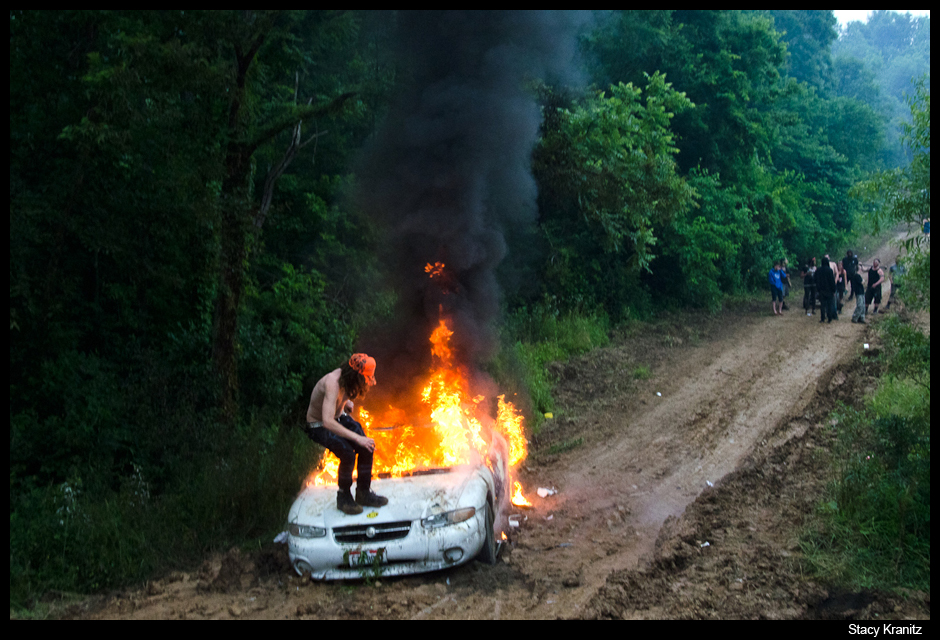
A car was blown up around 8am. People took turns jumping on top while it was on fire. 2011
I came to Skatopia searching for displays of violence that function as catharsis, as a part of a larger body of work that explores subcultures that self-consciously dramatize violence through rituals, habits, and pastimes. In performing these behaviors in front of the camera, the participants thereby implicate the photographer and viewer as consumers of that violence.
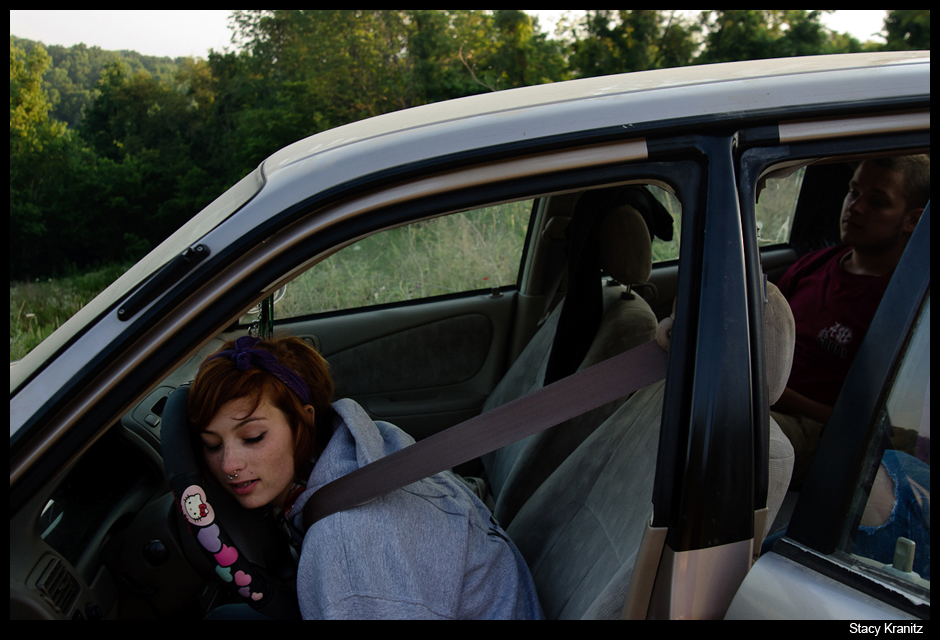
Bree is passed out on the steering wheel of her car at 7am. 2012
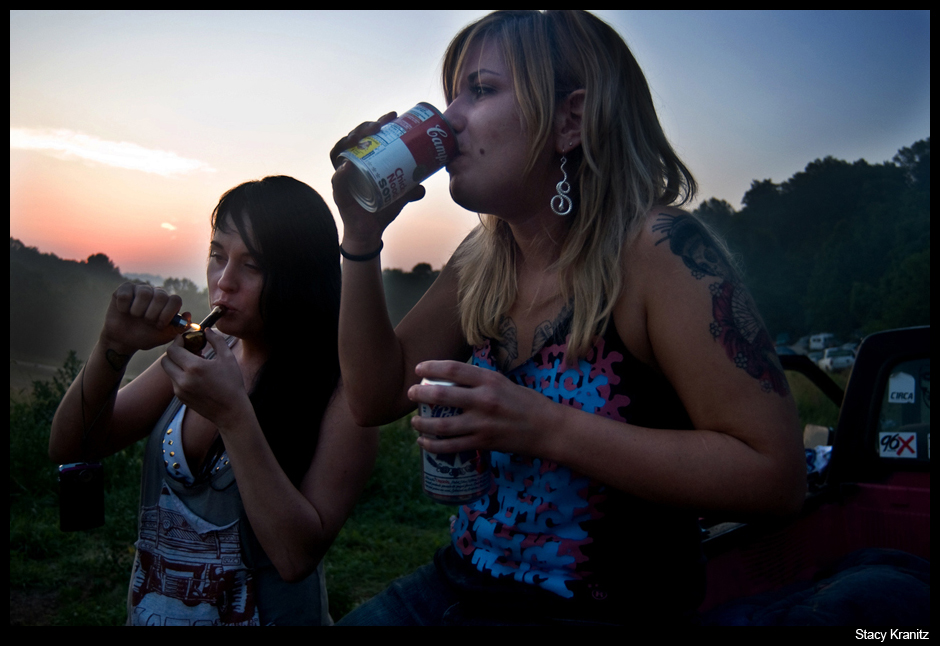
Two young women smoke marijuana out of a pipe while eating chicken noodle soup at sunrise rises. 2010
This is where my work is the most comfortable, not as documentation but rather as an exploration of the ethical boundaries of representation and the subversion of the photographer’s “role”. I willingly cross these boundaries to insert myself into the experience; I take up lovers and do the drugs I am handed. I do not accurately reflect my surroundings through my camera’s lens.
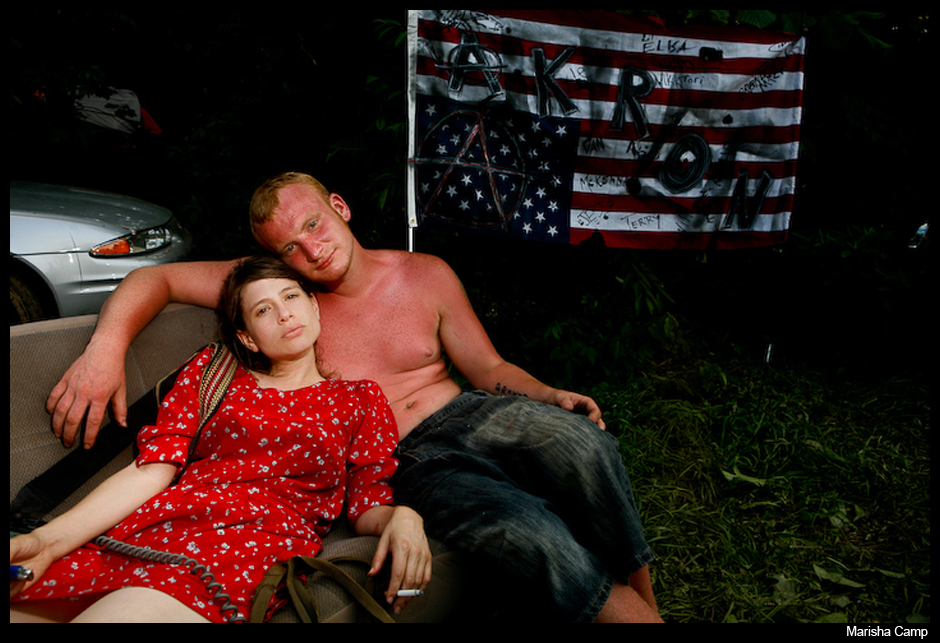
“I willingly cross these boundaries to insert myself into the experience”. Photograph by Marisha Camp. 2008
I awoke late that afternoon to find everyone begging to see pictures of Scott’s bloody hand. This tragedy had become a defining event for everyone there that weekend, and I could not fault them for their obsession. This is what my photographs are about: fetishizing violence. It is only natural that they, like me, desire to see, have and share the image of his hand, as a way to embed themselves as witnesses and participants, to say that they were there. In seeing it, they were part of this event that included his hand being blown off. The appeal: “My hand could have exploded, but it didn’t, his did.”
Within 72 hours, a series of images of the incident went viral. Someone had posted camera phone pictures to a photo sharing website and soon after people were posting links to the images on Facebook.
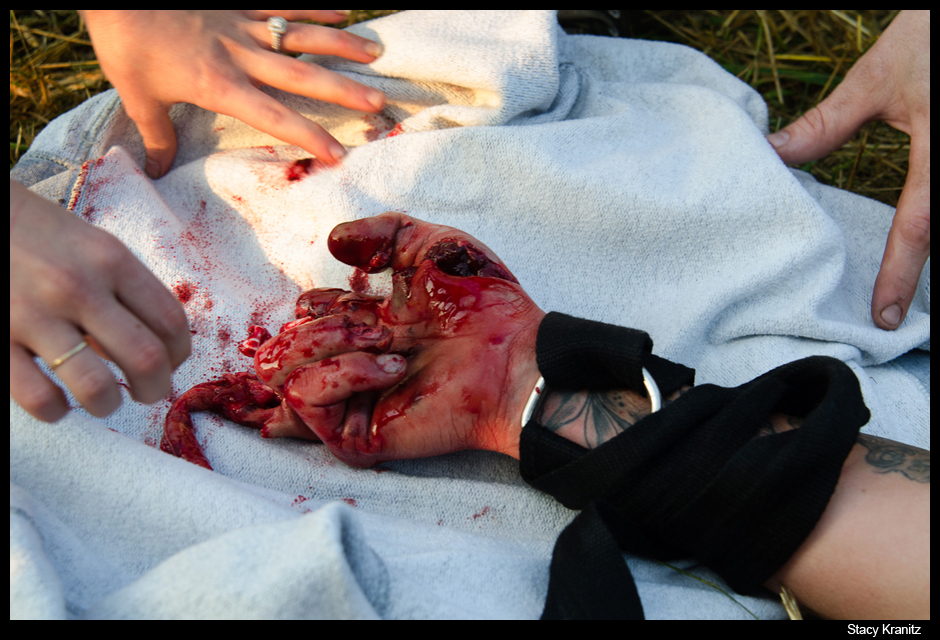
“Scott had blown off part of his hand from holding a lit mortar.” 2013
I went through the photographs I had made from the weekend. There was something so vulgar about the disembodied bloody hand excommunicated from its context. It left no room for the cathartic relationship to violence I seek to romanticize.
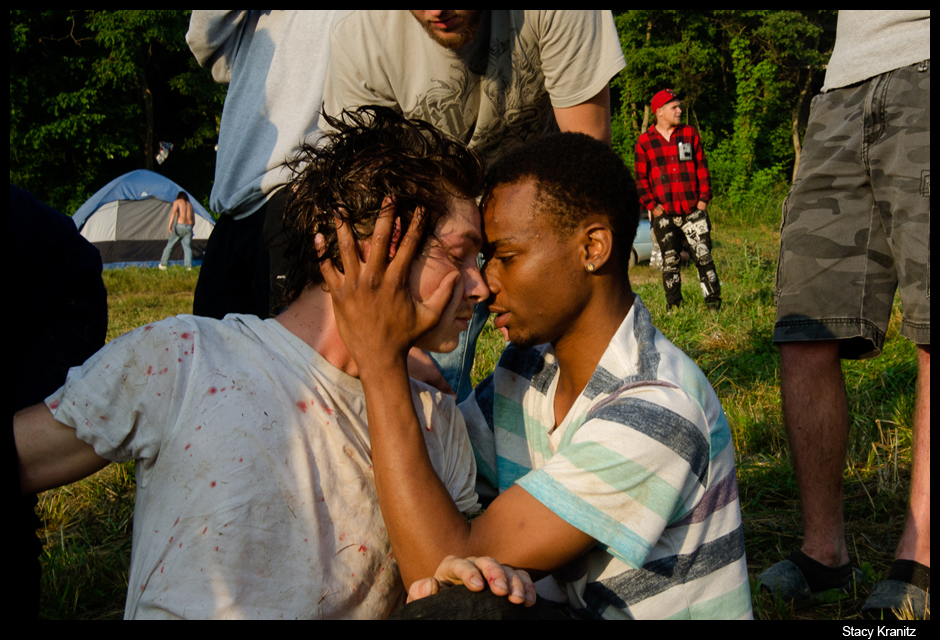
“Scott’s friend embracing him while he was in shock.” 2013
I found an image I had taken of Scott’s friend embracing him while he was in shock. In this image the viewer is confronted with an intense display of emotions disconnected from the tragedy. I add the image to my collection. I now have this haunting and unwieldy archive of violent images that function as catharsis. I continue to accumulate these images. I think maybe if I have enough evidence that violence can function as an emotional release I can validate certain behavior. But it’s not working. I’m not entirely sure what this archive achieves, and so I start following people I have met here back to their homes looking for something else entirely. This archive is now a point of departure for the building of intimate relationships with strangers through an entirely different image making process. I’ll discuss this in a few weeks.
Stacy Kranitz’s book, FROM the STUDY on POST-PUBESCENT MANHOOD/stacy kranitz, will be available at the end of August.
PHOTOGRAPHS by Stacy Kranitz
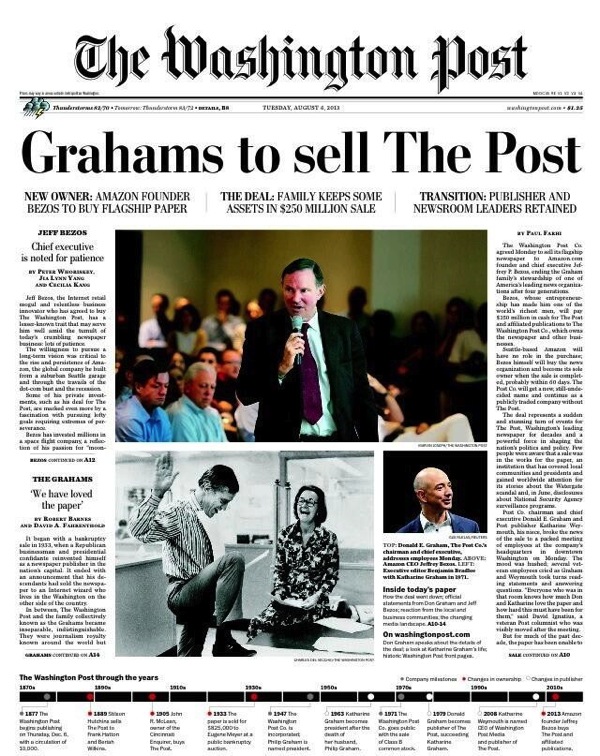
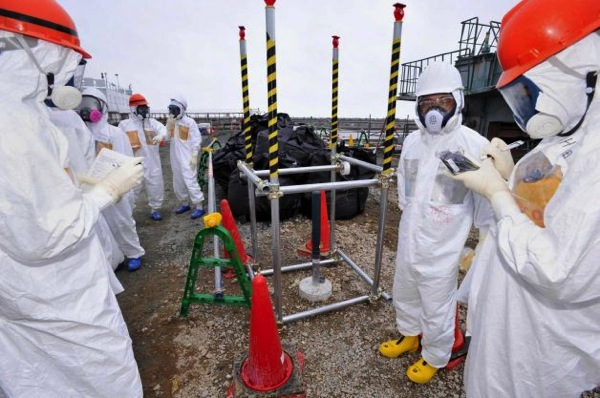
Reactions
Comments Powered by Disqus